Ancient China is the oldest extant culture in the world, dating back thousands of years. From Neolithic ceramics to jade carving and ritual bronzes, this country always demonstrated technical sophistication, brilliant craftsmanship and the constant implementation of large-scale production.
The Neolithic Age
The earliest examples of Ancient Chinese Art can be found in cave paintings, made by nomadic people with mineral pigments on the rock walls. These paintings were characterized by animals, hunting and masks representations and abstract patterns like zigzag lines, circles and spirals. The Neolithic Age (8000-2000 B.C) saw the transformation of nomad human settlements into agrarian societies in need of a permanent shelter. A period of innovation began with the development of settled farming communities along the Huanghe valley (Yellow River) and the north and the south of the Yangzijiang (Blue River). These cultures created an artistic tradition based on various types of artifacts that presented ornamentation and decoration. Pottery became the most important and representative art form of the time.
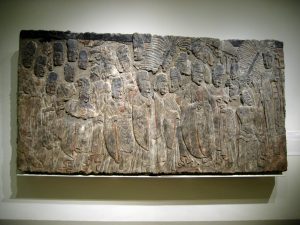
Metropolitan Museum of Art, NYC.
Relief from Yungang Grotto, Shanxi, China.
Image source: https://search.creativecommons.org/photos/65f33296-fd8b-4331-b987-c191f5843bd4 Author: Xuan Che
The Yangshao Culture
The Yangshao culture flourished in Henan province between 5000 and 4000 B.C and was important for painted pottery art. It was known for its excellent white, red, and black painted pottery decorated with human, animal, and geometric designs. Moreover, the ceramic was often painted with red and black pigments for burial purposes, which demonstrates the early use of the brush for linear compositions. It was formed by stacking coils of clay into the desired shape and by smoothing out the surfaces with shovels and scrapers.
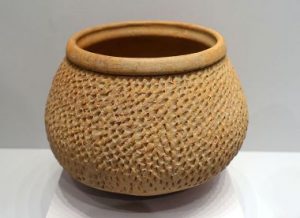
Image source: https://commons.wikimedia.org/wiki/File:Jar,_China,_Shaanxi_province,_Neolithic_period,_Yangshao_culture,_Banpo_phase,_5000-4000_BC,_earthenware_with_impressed_decoration_-_Arthur_M._Sackler_Museum,_Harvard_University_-_DSC00790.jpg
The Hongshan Culture
The Hongshan culture developed in Inner Mongolia (Liaoning) and in the north-east of China (Hebei) between 4700 and 2900 B.C. It played an essential role in the Chinese civilization for the construction of temples, sacrificial altars and square tombs. Nevertheless the most relevant artifacts made by Hongshan artists were jade carvings, copper rings and clay figurines, including statuettes of pregnant women. They gave a particular importance to jade, which was used in carving of different colors as light-green, cream or blackish-green. They also created different shapes including creatures like pig-headed dragons.
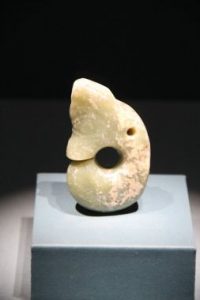
Image source: https://flickr.com/photos/101561334@N08/21832422104
The Liangzhu Culture
The Liangzhu culture flourished along the Blue River between 3300 and 2200 B.C and is known for many jade artifacts. Jade is a hard typically green stone used for ornaments and tools and it consists of the jadeite or nephrite minerals. It was laboriously carved and polished into many objects and was especially used for ritual purposes during the last Neolithic Age. It symbolized purity and moral integrity. Artifacts found in the tombs included bi discs, cong vessels, jewelry and necklaces. Archeologists also found objects with decorations that might look like a mask with large round eyes or an animal with curved horns.
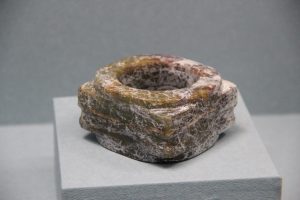
Jade gallery, Palace Museum, Taipei, Taiwan.
Image source: https://search.creativecommons.org/photos/13c06e17-8ff0-4afd-b16a-377914b0488a
Author: by Gary Lee Todd, Ph.D.
The Bronze Age
The Bronze Age began in 1700 B.C along the banks of the Yellow River in northern China. In this Era men learned how to mine copper and tin in order to make bronze weapons and tools, which required an organized labor force and skilled craftsmen. It was due to the fact that in the Bronze Age people had to learn how to produce enough extra food to feed other workers and the ruling class. There was a progress from the Neolithic Age, when people used to make simple stone tools just in order to satisfy their primary needs.
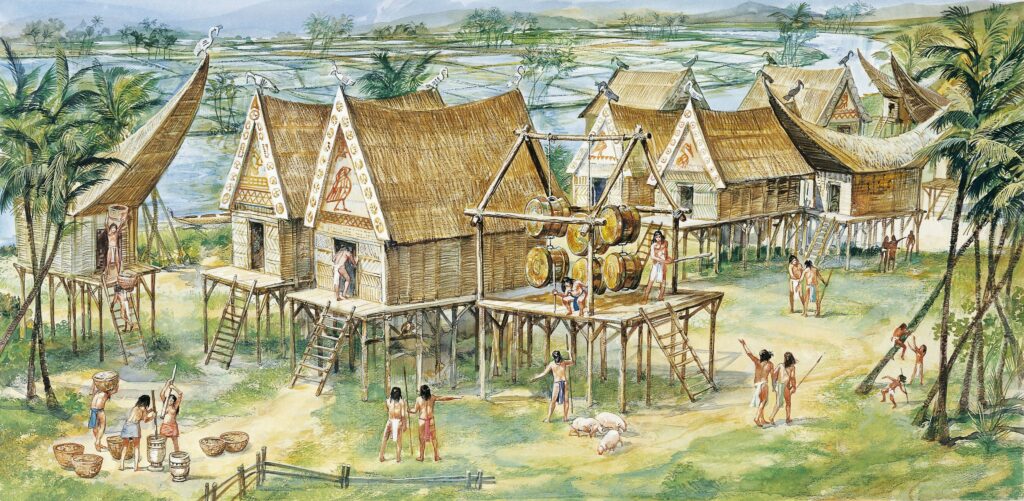
Image source: https://thestrangecontinent.com/china-bronze-age-village
The Erlitou Culture and The Xia Dinasty
The early Bronze Age was characterized by the Erlitou culture, the first state-level society in China which has been correlated to the Xia dynasty. The Erlitou site is near Yanshi city in Henan Province and was supposed to be the capital of the chinese dynasty which lasted from 2000 to 1600 B.C. Excavations identified palaces and large-scale buildings with architecture and artifacts for the elite class. In the city there was also a central palatial complex where burials were placed with grave goods such as bronzes, jades, turquoise, and lacquer wares.
Erlitou was also known for its bronzes: the earliest bronze vessels cast in China were made in the foundries and were used for the ritual consumption of wine, which was probably derivative of rice or wild grape.
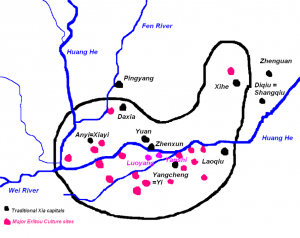
Image source: https://en.wikipedia.org/wiki/Erlitou_culture#/media/File:ErlitouXia.PNG
The Shang Dinasty
The long period of the Bronze Age saw the development of the civilization and the process of urbanization which brought a social order. What really brought social cohesion in China was ritualization and the most ritual objects were made in bronze. After the Xia dinasty, the area along the Yellow River became the centre of the political and military power of the Shang dynasty from 1600 to 1046 B.C. It brought a new level of sophistication to the production of weaponry and tomb construction. Ritual objects were bronze vessels, which are unique for the intricate motifs that cover their surfaces and the interesting repertoire of shapes. They were cast using ceramic piece molds and built around a clay model, which was cut or carved down to allow for bronze to be poured in the empty space between the model and the molds.
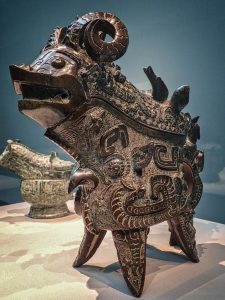
Image source: https://search.creativecommons.org/photos/3c3e7a2f-dc1d-4bd2-82c9-3d86defe3193 by mharrsch
The Zhou Dynasty
The Zhou dynasty, after conquering the Shang , became the longest reign in Chinese history, lasting from 1045 to 221 B.C. Its existence was divided into two periods: the Western (1045 -771 B.C) and the Eastern Zhou dynasties (770- 221 B.C). The first one had twelve rulers, the second one presented two sub periods: the Spring and Autumn Period (770-453 B.C) and the Warring States Period (453-221 B.C). In the Spring and Autumn Period many fights occurred and literacy spread thanks to philosophy and culture to encourage people’s freedom of thoughts. In the Warring States Period war technology improved with the replacement of bronze with iron as it was stronger and more durable for battles. Another important war technology was the wood chariot, built to carry three people. The Zhou were also the first to get silk from silkworms by feeding them mulberry leaves, making China the largest industry and biggest exporter in the world.
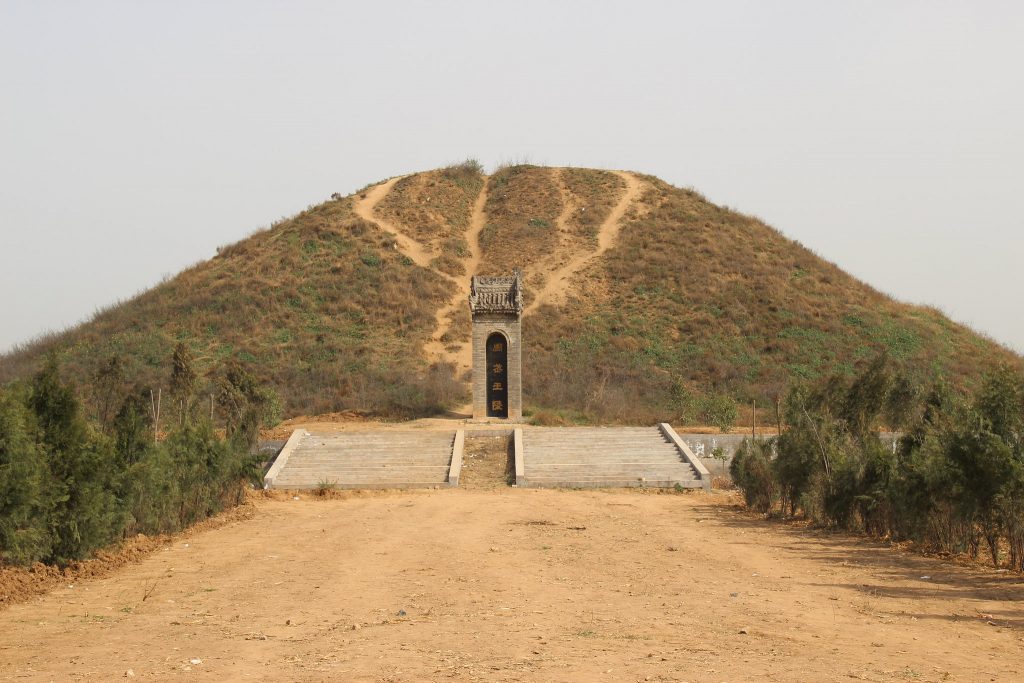
Image source: https://www.flickr.com/photos/101561334@N08/9905314033
Info sources:
https://www.khanacademy.org/humanities/art-asia/imperial-china/shang-dynasty/a/shang-dynasty-ritual-bronze-vessels https://www.khanacademy.org/humanities/art-asia/imperial-china/neolithic-art-china/a/jade-cong-and-bi https://sites.google.com/a/brvgs.k12.va.us/zhoutechnologyproject/ https://cincina.blog/2007/01/31/larte-in-cina-dal-neolitico-alla-dinastia-han/ https://www.metmuseum.org/toah/hd/shzh/hd_shzh.htm#:~:text=The%20era%20of%20the%20Shang,material%20culture%20of%20the%20time. https://www.dictionary.com/browse/jade http://factsanddetails.com/china/cat2/sub1/entry-5373.html http://factsanddetails.com/china/cat2/sub1/entry-5371.html http://www.visual-arts-cork.com/east-asian-art/chinese-neolithic.htm http://www.china.org.cn/english/China/217743.htm
